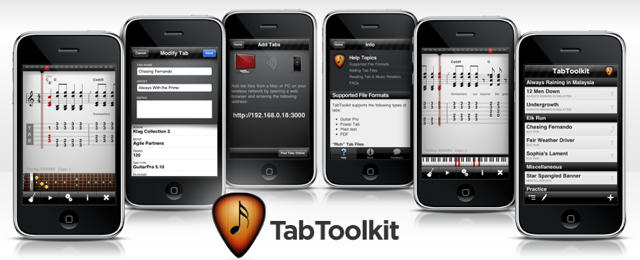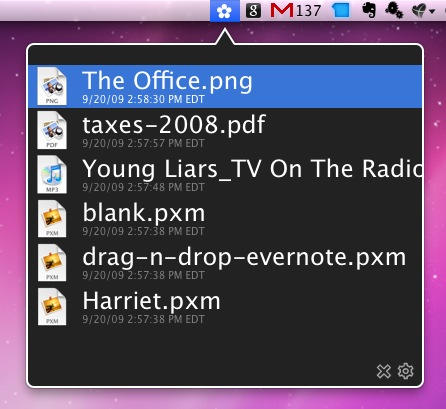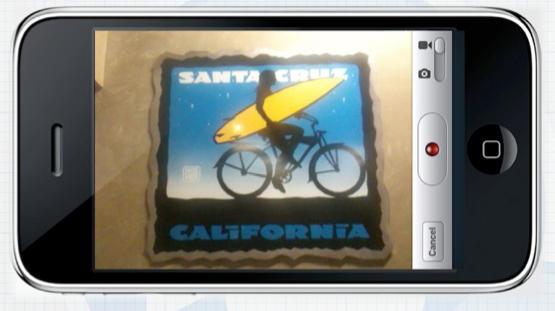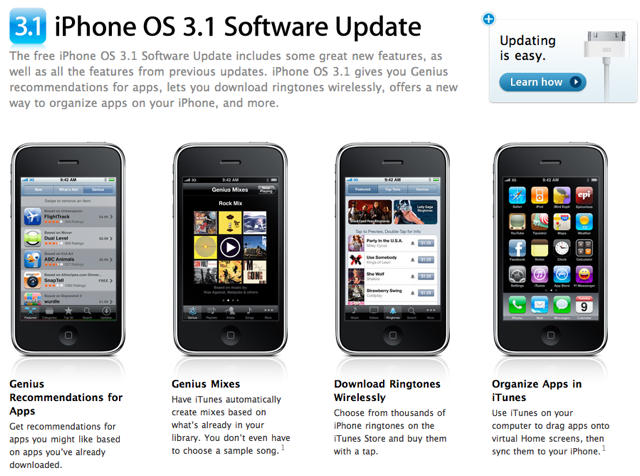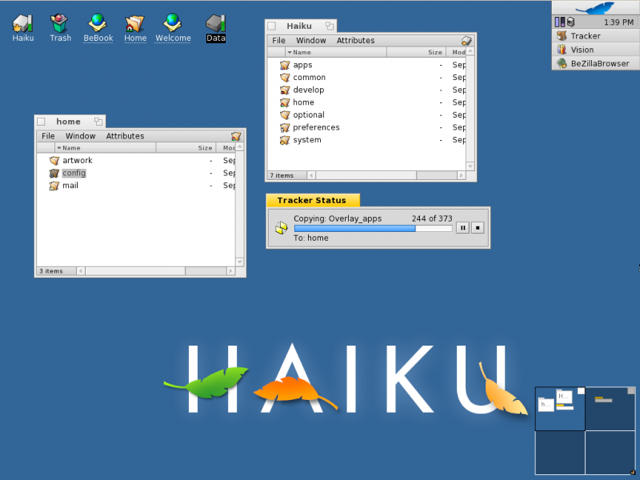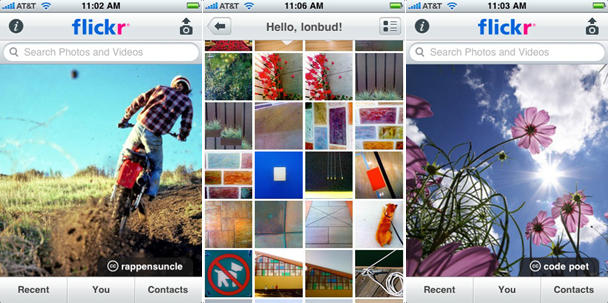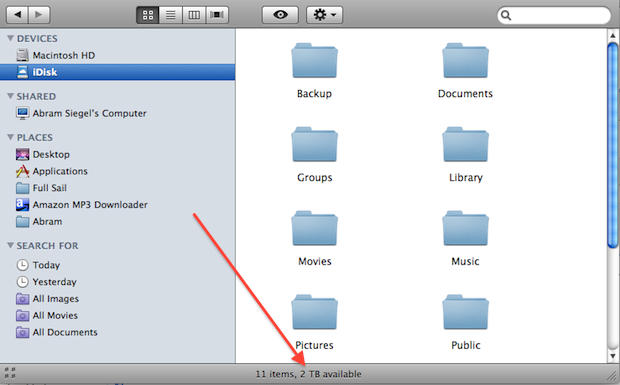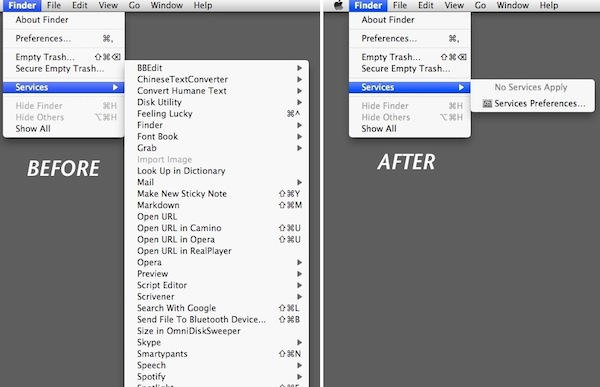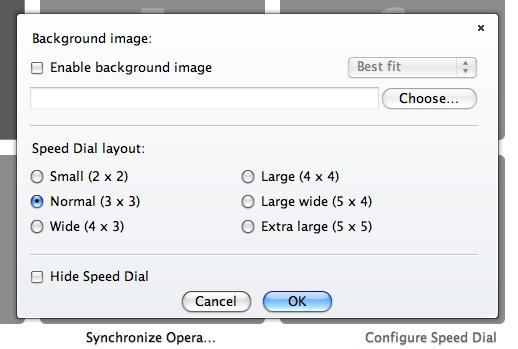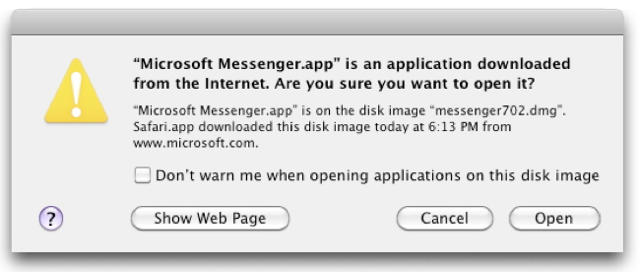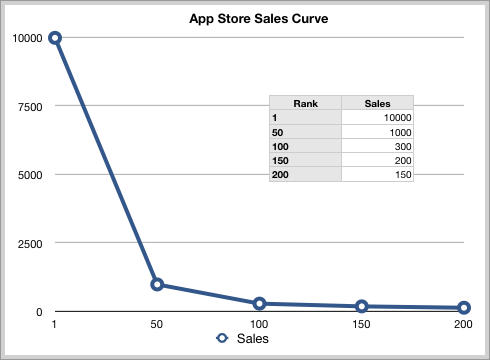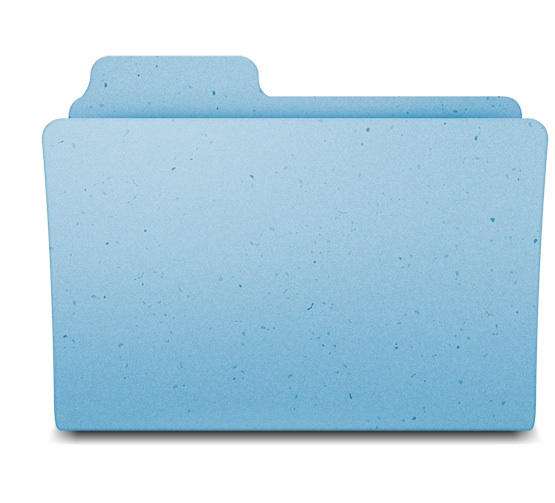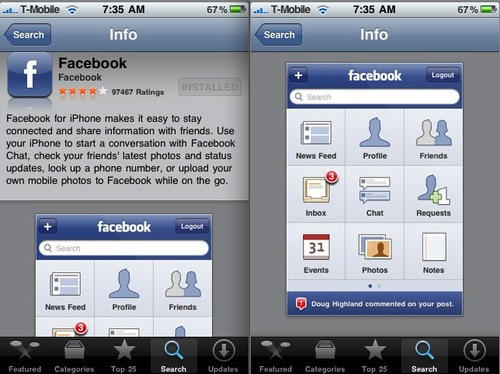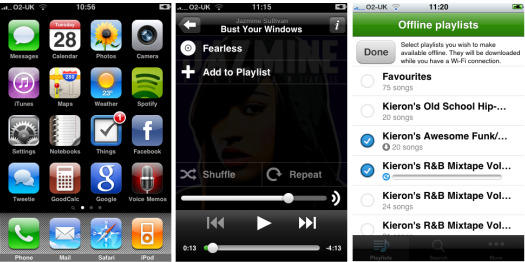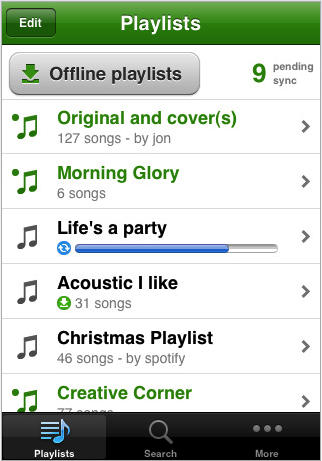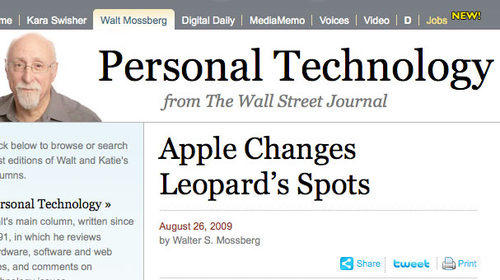What it is: Tab Toolkit is a sophisticated guitar practice and education app from Agile Partners, makers of the handy Guitar Toolkit app that came out in 2008. Tab Toolkit lets users read and listen to real-time guitar tablature files, scrolling through songs at the correct tempo, showing both traditional and tablature notation and superimposing fingering notation updated in real-time on a virtual fretboard or piano keyboard.
Why it’s cool: Tab Toolkit is an app for serious guitarists willing to invest $10 in something that will make tab charts come alive on the go. That said, the app is cool because it shows the user exactly where to finger guitar parts as a synthesized version of a song is playing in real time through the iPhone or iPod Touch speakers or headphones. Songs can be stopped and started, scrolled forward and back, and the sound output can be muted to allow users to concentrate on their own playing. The fretboard can even be flipped to accommodate left-handed players.
Tab files can be a bit of a rare beast to come by, with the most useful files optimized for Mac being those created and readable by GuitarPro software, which runs $59.
Online libraries such as GPro Tab offer free sharing of user-generated GuitarPro tabs, which can be a great way to get started in the rich world of online instrument practice and education. Tab Toolkit supports text files and PDF files as well, but the genius behind the app is best appreciated with a GuitarPro tab.
The app supports multitrack parts, so users can learn two different guitar parts to a song, for example, or the bass part, the keyboard part, or even the vocal. Tempos can be speeded up or slowed down, and getting tabs from a user’s computer on to the iPhone are a snap over a wireless network connection – from the web onto the phone they are just as easy using the embedded Safari browser.
This reviewer doesn’t have too many $10 apps on his iPhone, but as a musician, I can say without reservation that Agile Partners have created an incredibly useful, well-thought-out app that performs – so far – flawlessly.
Where to get it: Tab Toolkit went live in the iTunes App Store on Tuesday; it sells for $9.99
